Braising Away … with American Lamb
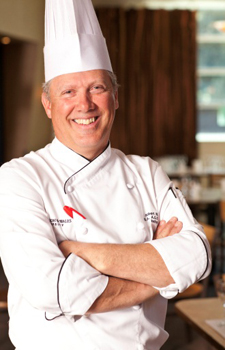 Braised lamb is economical and efficient. A successful lamb braise intermingles the flavors of foods being cooked, the aromatics employed and the cooking liquid—performing a magical transformation of lamb while adding body to the braising-liquid-turned-sexy-sauce.
Braised lamb is economical and efficient. A successful lamb braise intermingles the flavors of foods being cooked, the aromatics employed and the cooking liquid—performing a magical transformation of lamb while adding body to the braising-liquid-turned-sexy-sauce.
By Robert N. Corey, BA, AOS, CEC, EWS
Braising is for meat lovers. I have a passion for braised lamb shanks, an infatuation for sous-vide lamb necks, a serious affair going on with braised stuffed lamb breast and, from my very first taste of lamb, I have leg-of-lamb ecstasy.
While lamb is often considered an expensive meat for classroom use, braising allows me to focus on economical cuts of lamb. Thanks to the braise, I can find plenty of economical cuts for the long-simmered, wait-until-you-taste-this, top-of-a-heap goodness. My students will learn that dinner can be less expensive, and in all cases much more flavorful, when American Lamb meets a cook who can braise. This article will discuss the critical points of braising as related to utilizing, and enjoying economical cuts of American Lamb.

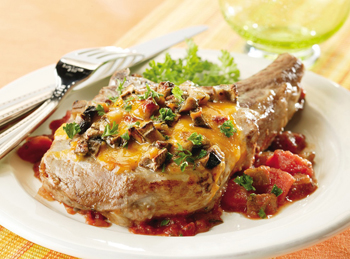 A new foodservice study shows that among all pork categories, bacon consumption grew the most per pound between 2011 and 2013, while carnitas meat grew fastest by percentage.
A new foodservice study shows that among all pork categories, bacon consumption grew the most per pound between 2011 and 2013, while carnitas meat grew fastest by percentage. Alex Stupak returns to his alma mater to deliver a commencement address, citing Grant Achatz and Ken Oringer as role models.
Alex Stupak returns to his alma mater to deliver a commencement address, citing Grant Achatz and Ken Oringer as role models. The value of a three-legged conversation is that you can make some statements or ask questions that prompt students to think about the topic they are raising, and you do not have to completely answer the question in one meeting.
The value of a three-legged conversation is that you can make some statements or ask questions that prompt students to think about the topic they are raising, and you do not have to completely answer the question in one meeting.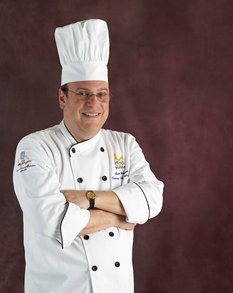 Continuing the theme of helping students work together successfully to better prepare them for real-life employment, Chef Weiner suggests strategic ways to group team members who don’t necessarily see eye to eye.
Continuing the theme of helping students work together successfully to better prepare them for real-life employment, Chef Weiner suggests strategic ways to group team members who don’t necessarily see eye to eye. Through the company’s Green Thread® program, concessioner ARAMARK works to reduce its environmental footprint by developing and implementing long-term environmental stewardship programs and policies for its state- and national-park accounts, diverting nearly 3 million pounds of waste from landfills.
Through the company’s Green Thread® program, concessioner ARAMARK works to reduce its environmental footprint by developing and implementing long-term environmental stewardship programs and policies for its state- and national-park accounts, diverting nearly 3 million pounds of waste from landfills. Marco Chirico, at only 25, is already moving a legacy into the next generation via his father’s restaurants—one operating for three decades and one a few years young—in Brooklyn.
Marco Chirico, at only 25, is already moving a legacy into the next generation via his father’s restaurants—one operating for three decades and one a few years young—in Brooklyn.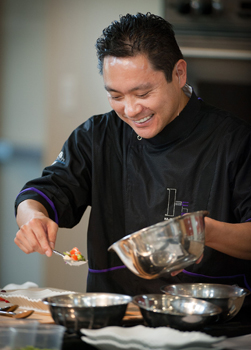 “Gold Medal Classroom” readers who answer a survey (see link below) will receive a special code for a $200 discount on Worlds of Flavor® 2013 registration. Also, all names will be placed into a drawing for one free Worlds of Flavor registration, and three respondents will receive a choice of one of three CIA books.
“Gold Medal Classroom” readers who answer a survey (see link below) will receive a special code for a $200 discount on Worlds of Flavor® 2013 registration. Also, all names will be placed into a drawing for one free Worlds of Flavor registration, and three respondents will receive a choice of one of three CIA books.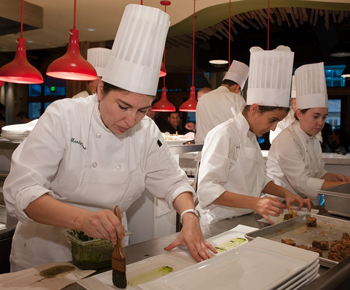 As students go to college this fall, The Culinary Institute of America (CIA) is offering them exciting new education options. These new concentrations—in beverage management, farm-to-table cooking and Latin cuisines—give students the chance to focus their studies on a particular area of interest in the food world.
As students go to college this fall, The Culinary Institute of America (CIA) is offering them exciting new education options. These new concentrations—in beverage management, farm-to-table cooking and Latin cuisines—give students the chance to focus their studies on a particular area of interest in the food world.